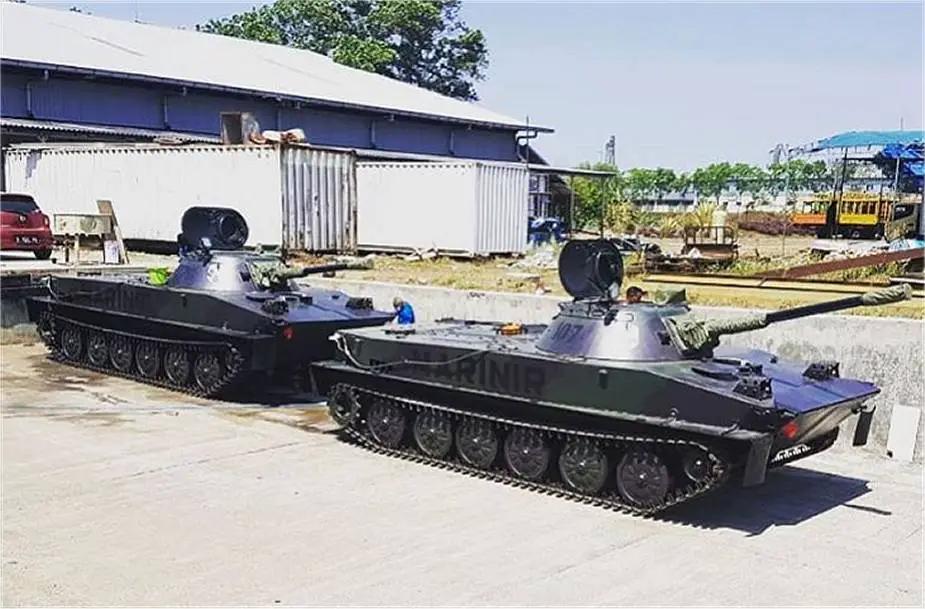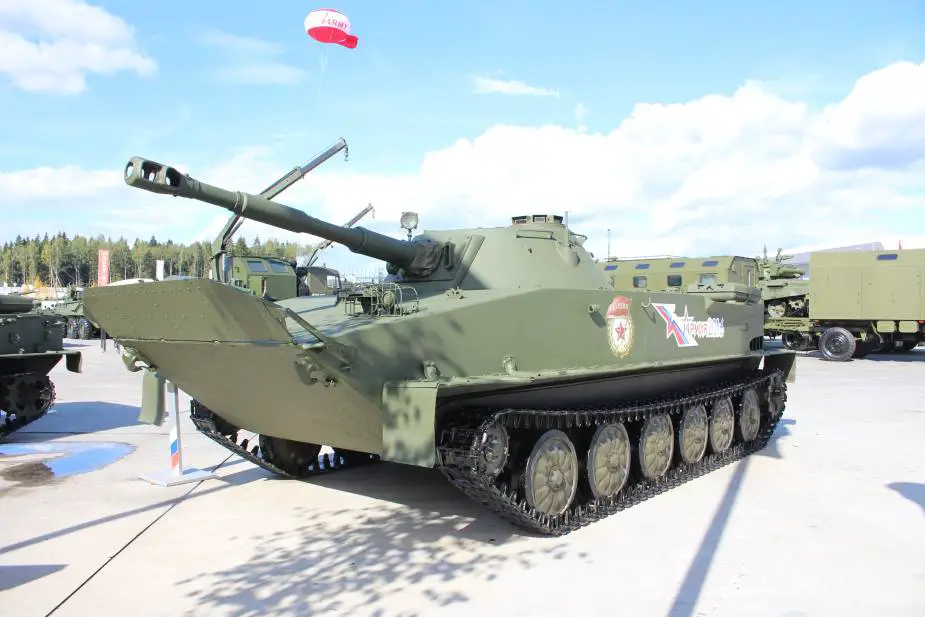Indonesian company PT Lumindo Artha Sejati has upgraded the Soviet-made PT-76 light amphibious tank used by the Indonesian Marine Corps. The upgraded PT-76 is motorized with a US-made Detroit Diesel engine and armed with John Cockerill (formerly CMI Defence) Mk III 90mm caliber cannon and new firing control system.
Follow Army Recognition on Google News at this link

Indonesian upgraded PT-76 light amphibious tank. (Picture source PT Lumindo Artha Sejati)
The first prototype of the Soviet-made PT-76 light amphibious tank was completed in 1950. Following trials and further modifications the vehicles were accepted for service with the Russian army in 1951. Production was undertaken at the Volgograd Tractor Factory from 1958 to 1967 and a total of 12,000 vehicles were built for the home and export markets. Total exports amounted to approximately 2,000 vehicles.
The PT-76 continues to be used by naval infantry units of the Russian armed forces. It was exported to other countries, like India, Iraq, Syria, North Korea, and North Vietnam. Overall, some 25 countries used the PT-76.
The hull of the PT-76 is of welded steel providing protection against firing of small arms and artillery shell splinters. The vehicle is divided into three compartments, with the driver at the front, the turret in the center, and the power pack at the rear. The turret is of all-welded steel with the commander, who also acts as the gunner, seated on the left and the loader on the right.
The main armament of the PT-76 consists of a 76.2 mm rifled D-56T gun which has a semi-automatic vertical sliding wedge breech block, a hydraulic buffer, and a hydro-pneumatic recuperator. The gun is 42 calibers long and has an overall length of 3.455 m and a weight of 1,150 kg. The gun has a maximum rate of fire of between 6 and 8 rds/min, a maximum range in the indirect fire role of between 12,000 and 13,290 m and can fire the following types of fixed ammunition: AP-T (BR-350 series), API-T (BZR-350B), HE-FRAG (0-350A), HEAT-FS (BK-354M) and HVAP-T (BR-354P). A 7.62 mm machine gun is mounted coaxially to the right of the main armament and the roof of the turret can be fitted with one 12.7 mm DShKM anti-aircraft machine gun.
The PT-76 is fully amphibious, being propelled in the water at a maximum speed of 9 km/h thanks to two water-jets mounted at the rear of the hull. The only preparation required before entering the water is to erect the trim vane at the front of the hull and switch on the two electric bilge pumps. A manual bilge pump is provided for emergency use.

PT-76B light amphibious tank (Picture source Army Recognition)
The Indonesian upgrade of the PT-76 is motorized with a new Detroit Diesel 6V-92T diesel developing 300 hp at 2,100 rpm coupled to the original transmission. The upgrade package also includes a new alternator (24 V, 200 Ah), a new cooling and electrical system and fuel, exhaust, air inlet, hull, and top deck modifications.
The original 76.2 mm gun is replaced by the 90 mm Cockerill Mk III gun that can fire a wide range of ammunition including APFSDS (Armour-Piercing Fin-Stabilized discarding Sabot). To improve the first round hit probability, a new fire-control system has been installed, together with a new day/night sight for the gunner which incorporates a laser range-finder. A new solid-state all-electric gun/turret stabilization and power control system has replaced the original Russian system and a new fire extinguishing system has been installed.
The Soviet-made 7.62mm coaxial machine gun seems to be replaced by a European 7.62 machine gun and a similar weapon can be mounted on the turret roof for air defense purposes.















